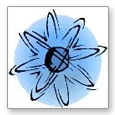
Overview
The goal of our studies is to understand the structure and dynamics of atoms and molecules using short femtosecond high harmonics laser photons and sliced synchrotron beams at the Advanced Light Source. The current program is focused on studying photo-ionization and photo-excitation of atoms and molecules, molecular orientation effects, and X-ray photo-excitation and ionization of laser-dressed atoms and molecules. The experimental and theoretical efforts are designed to break new ground and to provide basic knowledge that is central to the programmatic goals of the Department Of Energy (DOE). Unique LBNL facilities such as the Advanced Light Source (ALS) and the laser labs in building 2 (Femto second and High Harmonics Laser sources: Room 456 and 458) are being used in order to realize these investigations. The program makes full use of the unique resources and expertise of the Laboratory in engineering and detector development.
We seek to obtain new insight into atomic and molecular processes and to test advanced theoretical treatments by achieving new levels of completeness in the description of the distribution of momenta and/or internal states of the products and their correlations. Thus the Atomic, Molecular and Optical Sciences experimental subtask of the UXSL has three thrusts: (1) use of an intense femtosecond XUV (10-60 eV) high harmonic generation source to probe electron correlation in excited-states of molecules and atoms, (2) use of two-photon absorption and XUV pump-probe techniques to study non-adiabatic couplings of electron and nuclear degrees of freedom in simple molecules, (3) use the femtosecond slicing source at beamline 6 at the ALS to probe fundamental processes involving soft X-ray (300-1000 eV) interaction with inner-shell electrons of atoms and molecules in the presence of strong laser fields and shed light on electron correlation within this system.
For our experiments we set up the following scientific tools:
1.) High Power High Harmonics Laser System
The design and construction of our intense XUV source is based on scaling-up in energy of the loose focusing high harmonic generation scheme. Here the laser system consists of a mode locked laser oscillator, pulse stretcher, regenerative amplifier operating at 1 kHz, a home built 4-pass amplifier and a pulse compressor. The pulse energy output of the system is 30 mJ at 10 Hz and 35 fs pulse width.
2.) Momentum Imaging Spectroscopy for TimE Resolved Studies (MISTERS)
This apparatus enables us to image the 3-d momentum vectors of ions and electrons in coincidence. It is based on the COLd Target Recoil Ion Momentum Spectroscopy (COLTRIMS) technique. MISTERS fits specific needs dealing with the intense radiation fields coming from the different laser system(s): A very low operating pressure (10-10 mbar and better); a thin but localized and internally cold gas target i.e. a supersonic jet (precooled); a momentum spectrometer which is flexible in length and structure in order to deal with ions and molecules of different experiments.